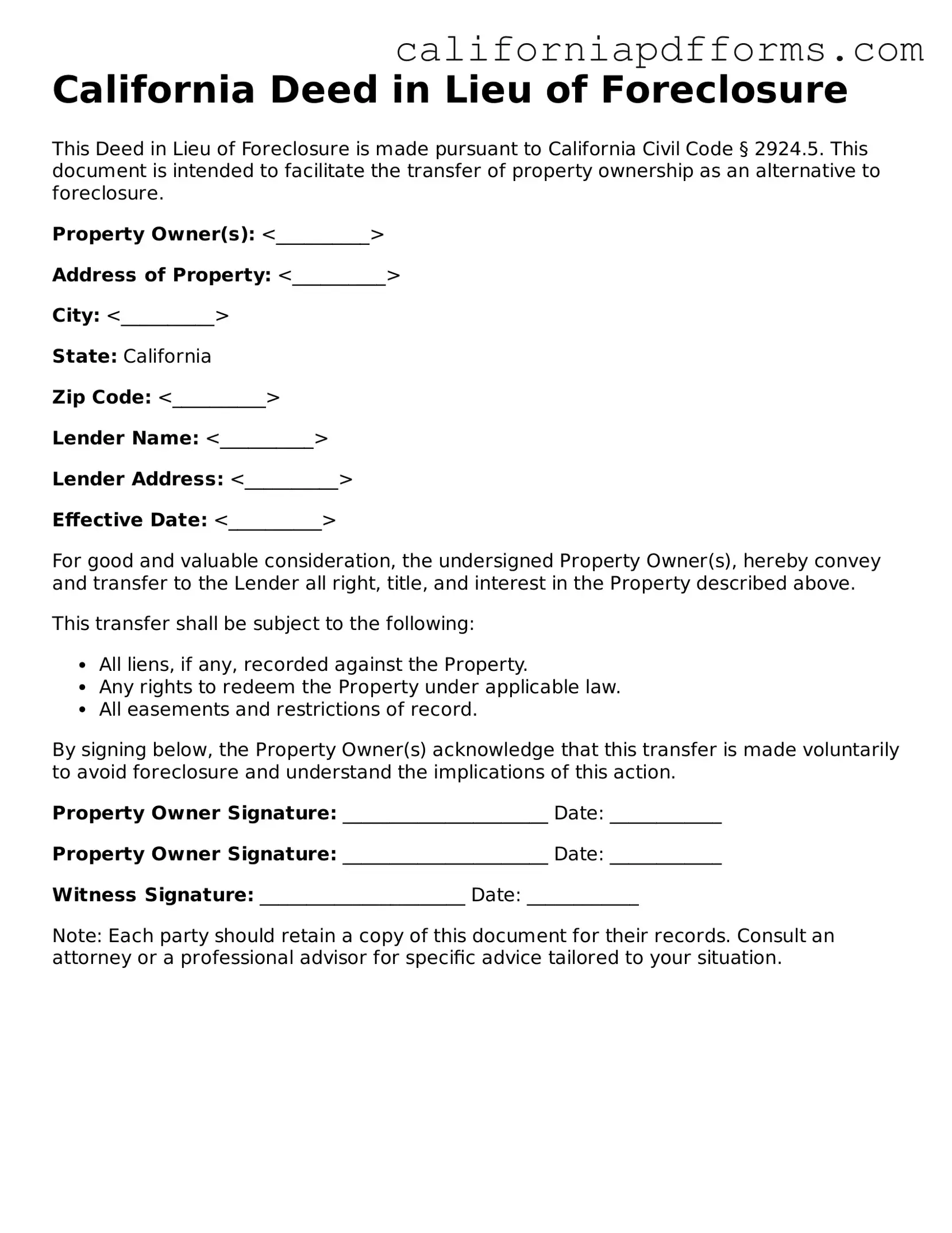Official Deed in Lieu of Foreclosure Template for the State of California
A California Deed in Lieu of Foreclosure is a legal document that allows a homeowner to voluntarily transfer ownership of their property to the lender in order to avoid foreclosure. This process can provide a smoother exit for homeowners facing financial difficulties, potentially alleviating some of the stress associated with foreclosure. If you're considering this option, fill out the form by clicking the button below.
Open Your Form Online
